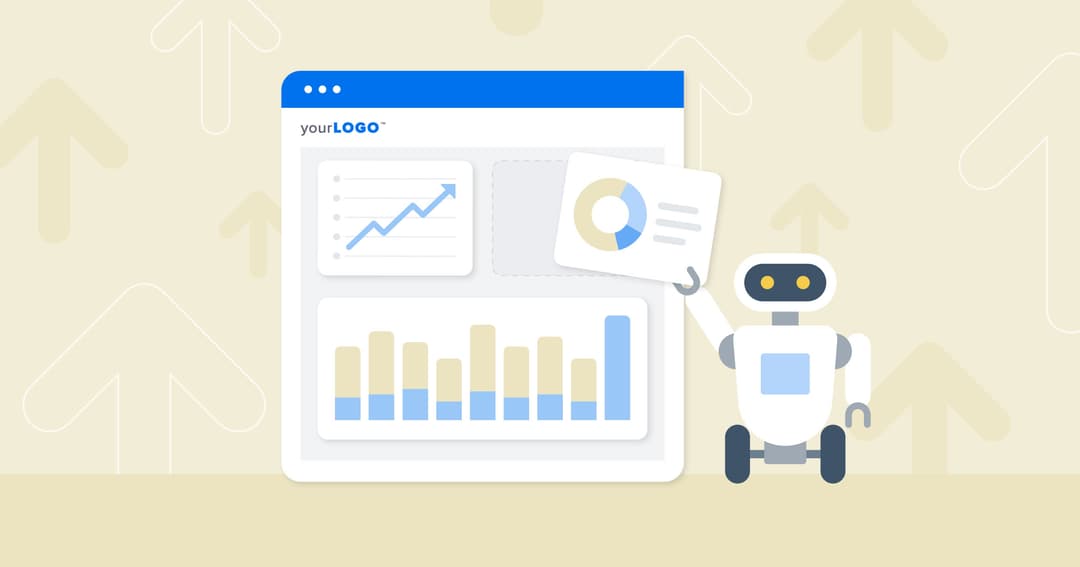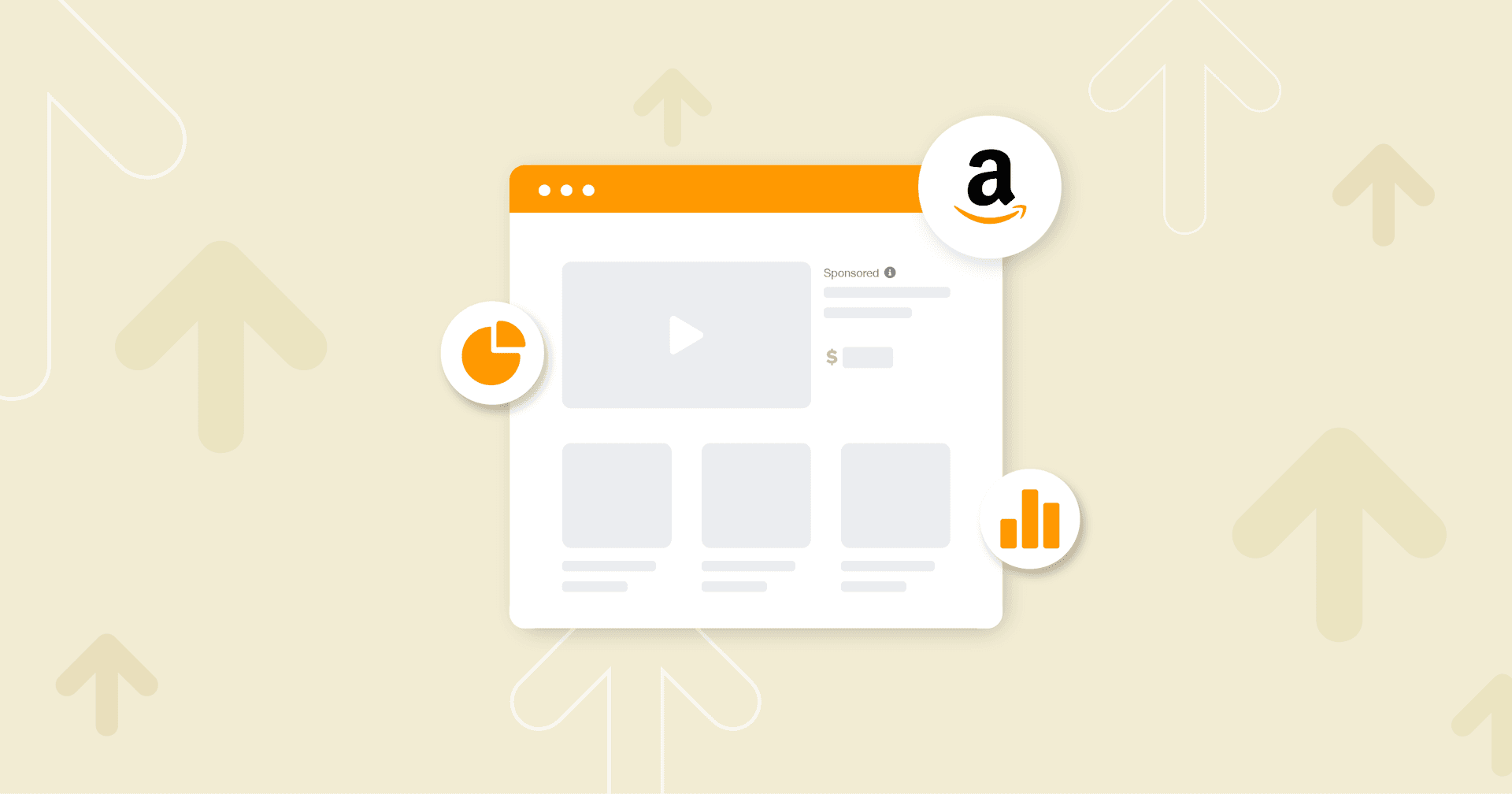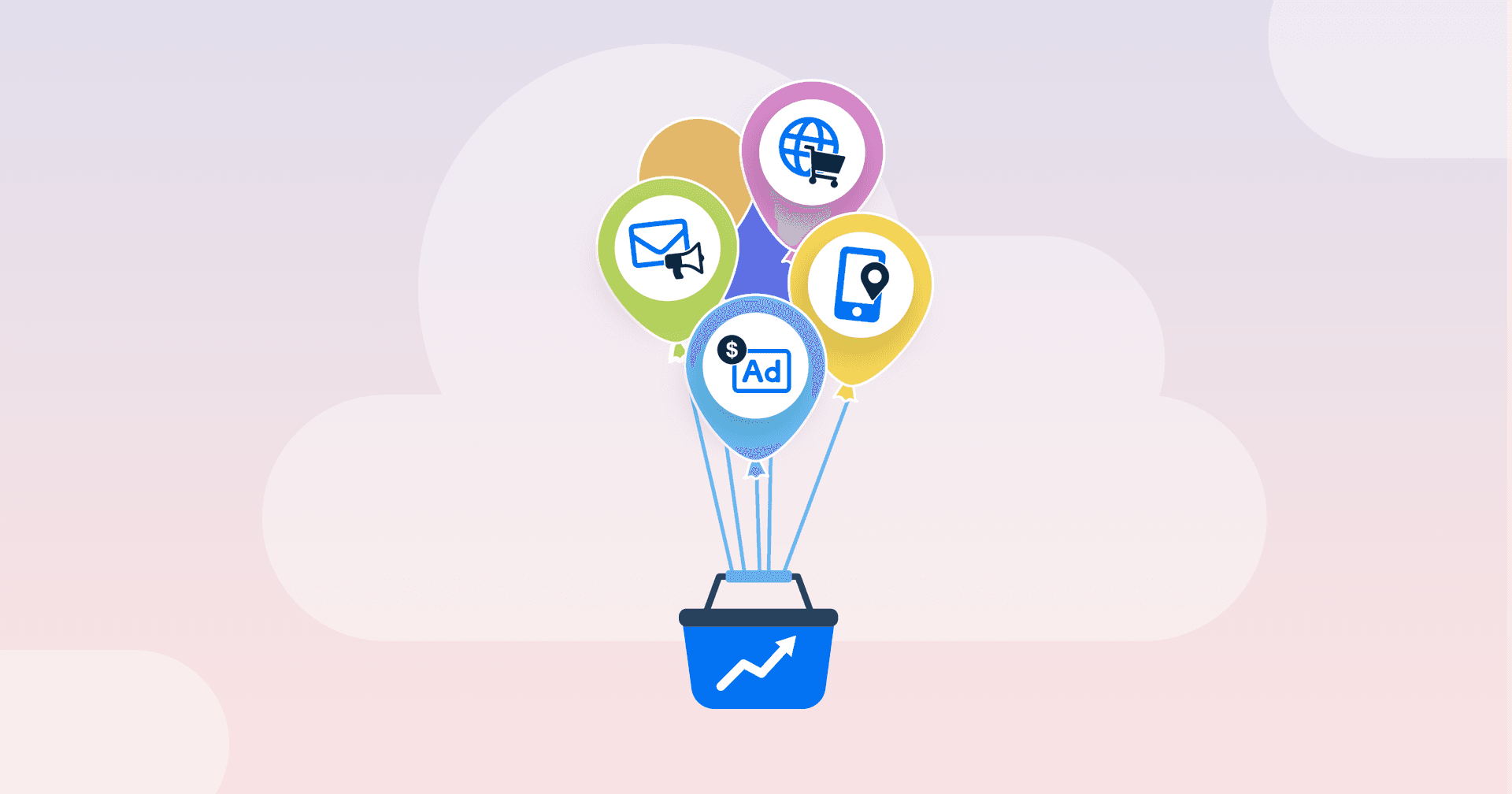Table of Contents
Table of Contents
- What is AI Conversion Rate Optimization?
- Why Conversion Rate Optimization is Critical for Campaign Success
- How AI-Powered CRO Tools Stretch Marketing Budgets Further
- How To Implement AI-Powered CRO in 6 Steps
- Proving the Value of Your Conversion Rate Optimization Efforts
- Key Considerations for Using AI Tools for CRO
- Why AI Conversion Rate Optimization Needs Human Intervention
- AI = An Asset to Improved Conversion Optimization
7,000+ agencies have ditched manual reports. You can too.
Free 14-Day TrialQUICK SUMMARY:
AI conversion rate optimization uses artificial intelligence to enhance landing page performance. In this guide, Paul Park, Senior Content Creator at Unbounce, takes marketing agencies through a step-by-step process to implement AI-powered conversion optimization strategies that drive higher engagement, boost conversion rates, and deliver real ROI for marketing agency clients.
We all have that one witty, persuasive friend—the one with an almost magical ability to influence others. They could charm birds out of the trees, leaving them happily chirping as they perch on their shoulders.
Landing pages are a lot like that friend. A thoughtfully designed landing page works with the same kind of charm, effectively guiding customers toward a single goal. Whether it’s driving sales or generating leads, its sole purpose is to persuade visitors to take action. Add AI-powered conversion rate optimization (CRO) tools to the mix, and that persuasive power gets a significant upgrade!
Adding the power of artificial intelligence to your agency’s digital toolkit is becoming less of a luxury and more of a necessity for helping your clients reach their maximum potential.
After all, as an agency, you’re in the business of bringing value to your clients and helping them achieve what they want. And what’s at the top of most clients’ wishlists? Improved conversion rates.
In this guide to AI conversion rate optimization, I’ll show you how you—and your AI “friends”—can work together to get more conversions for your client’s landing pages.
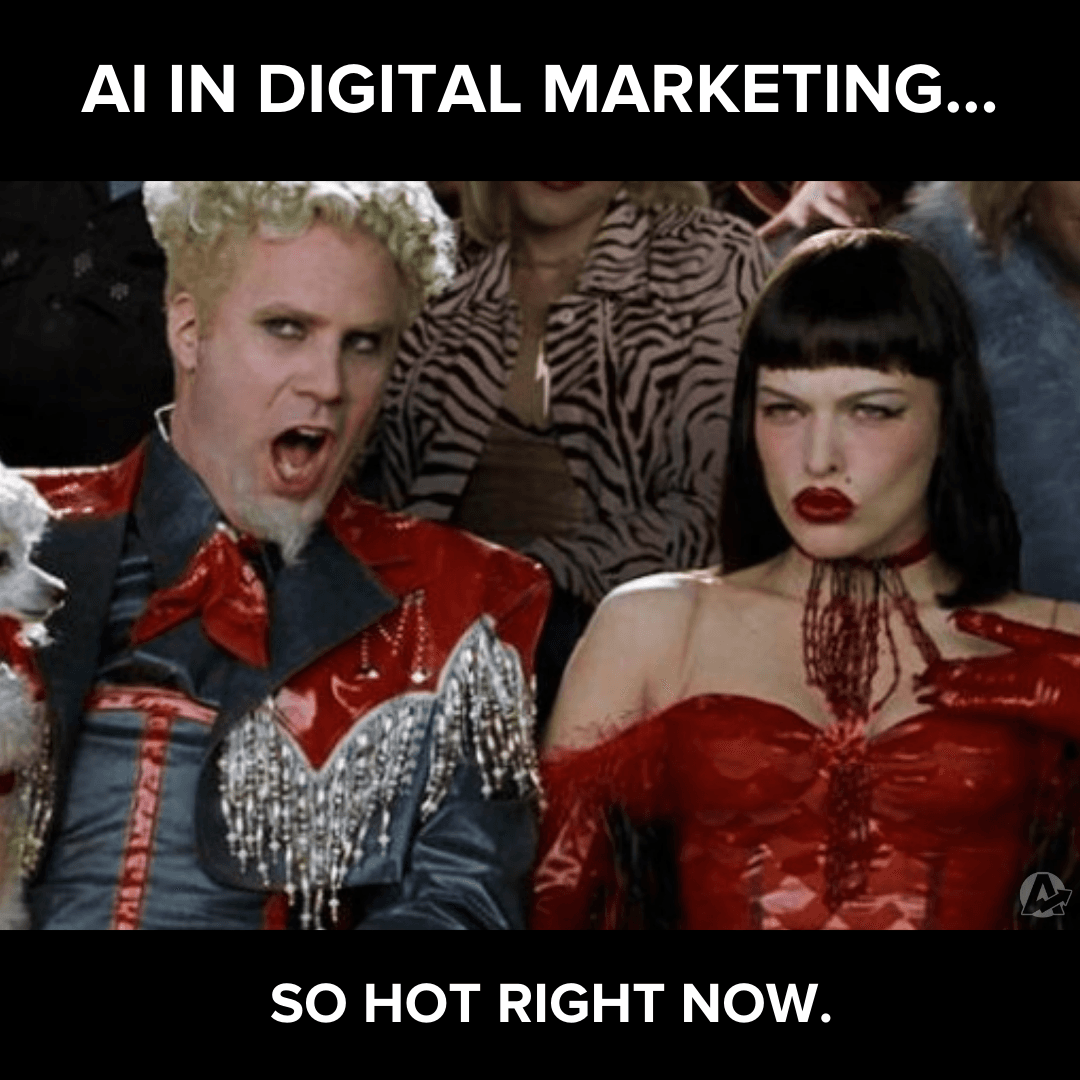
What is AI Conversion Rate Optimization?
Before diving into how AI data analysis tools help you elevate your campaigns, let’s look at what AI Conversion Rate Optimization (CRO) is, and why it’s essential to include in your marketing strategy.
At its core, a landing page exists to get visitors to take a specific action—like filling out a form, adding a product to the cart, or subscribing to a newsletter. Without that action, even the most beautifully designed landing page misses the mark.
Sure, getting people to your page is important, but if they’re not converting, it’s like throwing a party no one stays for. If visitors aren’t converting, the effort and budget spent on generating that traffic don’t deliver the value your client expects. That’s where CRO comes in. The conversion optimization process involves all the steps you take to improve your page’s ability to persuade visitors, ensuring that every element works cohesively to maximize conversions–and AI enhances the efficiency of this process even further.
In short, AI CRO is about turning more of your hard-earned traffic into tangible results!
Why Conversion Rate Optimization is Critical for Campaign Success
Investing in CRO isn’t just about improving metrics—it’s a strategic move. Better conversion rates don’t just drive action; they deliver major benefits for your agency, including:
Increased Revenue: More cash! Even a tiny boost in conversion rates can add big bucks to your client’s bottom line.
Better SEO: Conversion rates are one of the metrics Google uses to rank search results, so higher conversion rates often lead to better placement on SERPs.
Increased ROAS: Paid advertising is getting more expensive and competitive every day, so improving landing page conversion rates is one way to squeeze more juice (conversions) from the oranges (visitors) you already have.
Quick Results: Changes to SEO or campaigns may take time for any results to appear, but effective CRO often has a noticeable impact within as little as a few days.
Improved Lead Generation: CRO means more forms filled and more warm leads knocking on your client’s door.
A well-optimized page helps your client achieve their goals, strengthens their trust in your agency, and creates a ripple effect of success. Happy clients mean stronger relationships, better retention, and more opportunities for growth—what we call the “win-win-win” magic of effective conversion rate optimization.
“Sure,” you’re probably thinking, “I get it. CRO is the secret sauce behind successful campaigns. But how do I improve CRO?” Well, that’s where it all comes back to your smart friend, AI.
How AI-Powered CRO Tools Stretch Marketing Budgets Further
Chances are, you’re already using AI tools like ChatGPT, Midjourney, or Smart Copy to quickly whip up content with a few well-crafted prompts. While these tools are great for generating text and visuals, AI can do so much more—especially when it comes to making your clients’ budgets work harder.
AI-powered conversion rate optimization (CRO) tools are like having a team member who never sleeps. They sift through mountains of data and tell you exactly how to get better results—no coffee breaks needed. They remove the guesswork and save you from spending weeks (or months) manually testing different strategies.
The result? Every marketing dollar is put to better use. By automating the optimization process and making campaigns more efficient, AI tools help you achieve higher conversions without increasing ad spend. Instead of paying for more traffic to hit underperforming pages, you’re improving the performance of the pages themselves—turning the same number of visitors into more customers.
For agencies, this is a huge win. You’re delivering measurable improvements in ROI without ballooning the budget, which increases customer satisfaction from your clients and positions you as a results-driven partner who gets more impact for their spend. Higher conversions, smarter resource allocation, and a bigger bottom-line impact—now that’s what makes everyone happy.
How To Implement AI-Powered CRO in 6 Steps
Now that you know it’s worthwhile to add AI CRO tools to your tech stack, how do you get started? I’m about to show you how to leverage these tools to boost landing page conversions for your clients.
1. Set Clear Conversion Goals
Before you start playing with AI CRO tools, the first step is to get super clear on what success looks like. At the end of the day, boosting conversion rates is awesome—but it only matters if it helps your client hit the goals that actually matter to them.
What’s the one action your client wants visitors to take when they land on the page? It could be completing a purchase, signing up for a newsletter, filling out a contact form, or booking a demo. This action becomes your conversion goal—the measuring stick for how well your landing page performs.
For example, if your client’s goal is to promote a free eBook, success means users fill out a form to download it. If it’s an ecommerce page, success could be defined as add-to-cart clicks or completed purchases.
Once you know what success looks like, the next step is setting realistic targets for your conversion rate. But how do you know what’s achievable?
Industry benchmarks are your best friend here. Benchmarks help you see where your client stands now and give you a solid target to aim for.
Use AgencyAnalytics’ benchmarks feature to compare conversion rates directly against industry medians over the last 30 days. Try it out with your AgencyAnalytics 14-day free trial.
By setting clear goals and knowing what’s standard in the industry, you can fine-tune your CRO strategy to get real results and ensure every part of the landing page is pulling its weight.
2. Gather Landing Page Performance Data
Now it’s time to dive into the data and uncover where visitors are falling off in the conversion process. Data is the backbone of conversion rate optimization, and knowing how to analyze it could mean the difference between guesswork and real results.
Here’s the thing: user behavior data tells you not just what is happening, but where and why things might be going wrong. The beauty of AI-powered conversion rate optimization tools is that they take the heavy lifting out of this process. These tools sift through massive amounts of information, spot trends, and highlight opportunities that might take a human team weeks to uncover.
What Metrics to Analyze
Start by focusing on key KPIs and metrics that give you clues about where visitors are getting stuck:
Bounce Rate: Are visitors landing on the page and leaving right away without taking action? A high bounce rate might mean the messaging or design isn’t resonating with their expectations.
Time on Page: How long are visitors staying? If they’re spending time on the page but not converting, something on the page might be confusing, or the CTA isn’t compelling enough.
Form Abandonment: Are users bailing halfway through a form? If so, the form might feel too long, too complicated, or just unnecessary.
Click-through Rates (CTRs): Are visitors interacting with your call-to-action buttons? If not, your CTAs might not stand out enough, or the messaging might not be clear.
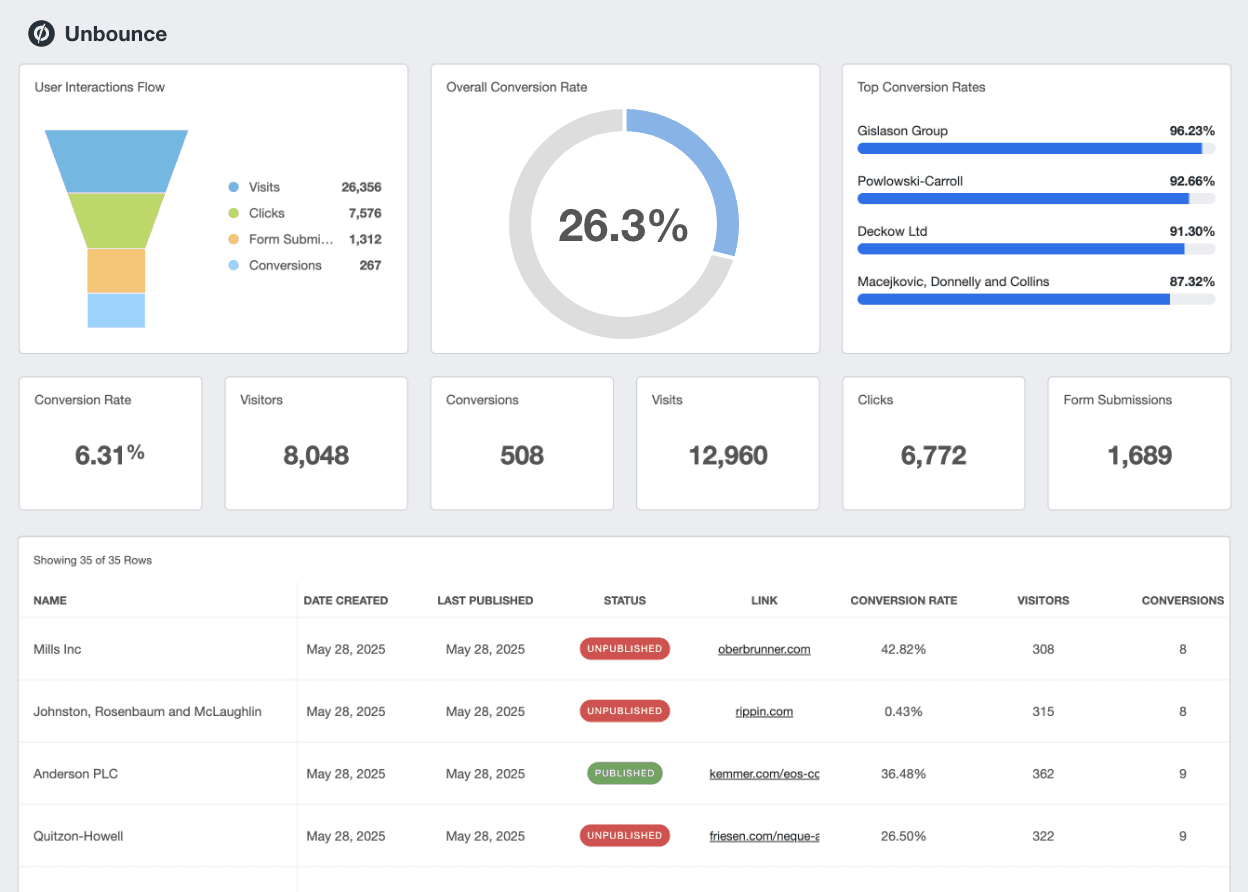
Ready to uncover where your landing pages are falling short? Use the AgencyAnalytics Unbounce integration to effortlessly track bounce rates, clickthroughs, and conversions—all in one easy-to-use dashboard. Try it now with a 14-day free trial.
3. Formulate a Hypothesis
Now it’s time to play a bit of a fun guessing game and form your hypothesis.
Hypotheses turn vague assumptions into clear, testable ideas. Without them, you’re just making random changes and hoping for the best—a sure way to waste time, effort, and budget.
A hypothesis is a simple statement that identifies:
What you plan to change (the element you want to test).
What you expect to happen (the predicted result).
Why you think it will work (the reasoning behind your assumption).
A hypothesis might look like this:
"If we align the landing page headline and copy with the messaging in the ad, then the conversion rate will increase because visitors will feel their expectations are being met."
In CRO, hypotheses are your secret weapon for approaching landing page optimization systematically. Instead of guessing and making random changes, you’re using data to guide decisions and set expectations.
4. Use Predictive Analytics to Predict User Behavior
Seeing what customers have done in the past is pretty easy with access to historical data. Predicting what they’re going to do in the future, however, is a whole different beast! Past behavior doesn’t necessarily dictate future intent. Just because a customer bought one type of product in the past doesn’t necessarily mean they’re going to keep buying that same product in the future.
The key to becoming an expert at analyzing user behavior is to understand the difference between behavior and intent. Basic data analysis reveals past behavior patterns, but it’s intent that determines what customers will do next.
AI marketing tools shine when it comes to predicting user behavior. By gobbling down large data sets of user behavior, AI tools crunch the numbers and make accurate predictions about future customer intent. Your marketing team then uses these predictive analytics to create personalized marketing campaigns that are far more likely to boost conversion rates.
How AI Predictive Analytics Work
So what’s the magic formula behind how AI reads the digital tea leaves? The entire process is pretty complicated–there’s a reason why the people who create and refine predictive models are called “data scientists,” after all—but here’s a bit on how predictive analytics work:
Analyzing Large Volumes of Data: One of the biggest strengths of AI tools is their ability to devour gargantuan amounts of data, far more than any human ever could.
Processing the Data: After the AI tool has filled its digital belly with vast reams of data, it “cleans” the data by organizing it, removing anomalies, and eliminating extreme outliers. This helps make the data more usable and accurate.
Creating and Testing Predictive Models: Through machine learning algorithms, the AI tool makes predictions and then tests them for accuracy. It’ll do this over and over again, millions or even billions of times, and at lighting speed. The models are refined and adjusted after every test to ensure the highest possible accuracy.
The end result of all this data-crunching is access to user data that can feel almost magical for your agency! In a world where every click counts, accurate predictions about customer intent mean more targeted campaigns, higher conversion rates, and better allocation of resources.
4. Develop Personalized Content
When you want to slow down your car, friction (in the brakes) is good. But when it comes to converting on landing pages, friction is bad. The more difficult it is for visitors to find what they’re looking for or to take the action your landing page is designed for, the less likely they are to convert.
Remember the last time you tried to buy something online and couldn’t find what you were looking for, so you got frustrated and closed the tab? Yeah, your clients’ customers remember that, too!
An effective way to reduce friction is through dynamically generated content. With this in place, you sneakily (and automatically) tailor your clients’ landing pages to create personalized experiences for each visitor.
Instead of relying on a one-size-fits-all approach, personalized landing pages give visitors the experience they’re looking for and increase conversions.
To demonstrate how this helps with conversion rate optimization, I’ll fill you in on a bit of an Unbounce client success story. Taylor Made Marketing, a digital marketing agency, serves clients across the US. Its main landing page was typically earning conversion rates of ~3-5%.
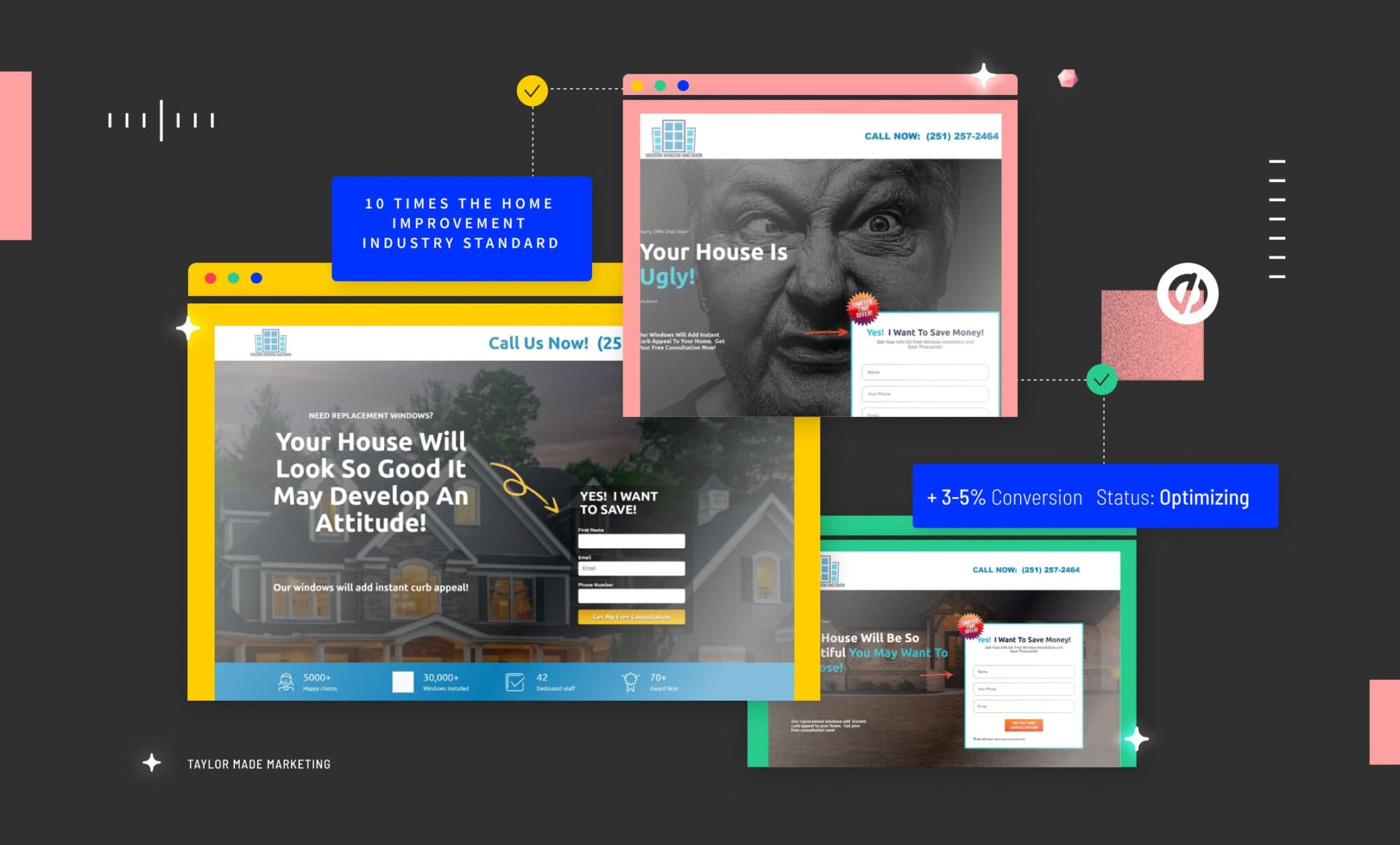
Once they started using Unbounce’s AI optimization tool for Smart Traffic, it wasn’t long before their conversion rates skyrocketed to an eye-popping 35% (yes, you read that correctly!).
Taylor Made Marketing used Smart Traffic to test multiple page designs simultaneously, tailoring pages for customers in different regions. By experimenting with elements like copy tone, videos, and celebrity endorsements, they quickly identified what worked best for each market.
As Taylor Made Marketing’s success shows, leveraging AI-powered tools like Smart Traffic allows agencies to create tailored, friction-free experiences that resonate with customers and drive impressive results. With conversion rates soaring from 3-5% to 35%, it’s clear: when you put the right content in front of the right audience at the right time, everyone wins.
5. Set Up A/B Tests and Multivariate Tests
Okay, so your team used AI to analyze data, identified trends in customer intent, created an awesome campaign, and set up automatically personalized landing pages. So now it’s time to sit back and relax, right?
Nope! (Yeah, you knew this was a trick question.) Your next step is to check if your plan is working and make any necessary changes along the way—this is the “optimization” part of conversion optimization.
One way to test how well a specific element on your page is working is through A/B testing (or split testing). While this type of conversion rate optimization should be an essential part of any digital marketer’s toolkit, it does have some limitations. For one, you’ll need to have enough visitors to ensure your results are statistically significant—just a dozen or so visitors won’t provide useful data. Because you can only test one page element at a time for it to be an experiment, it isn’t a quick process either.
Another option for testing is using multivariate testing, which allows you to analyze multiple landing page variations simultaneously. As we mentioned earlier, AI conversion rate optimization tools like Unbounce’s Smart Traffic enable your team to set up several different versions of a landing page, then the tool automatically learns from the results and optimizes the variations. And it’s fast– Smart Traffic provides useful results with as few as 50 visitors, so you’ll start seeing results pretty darned quickly.
AI conversion rate optimization tools like Smart Traffic demonstrate just how effectively artificial intelligence saves your team time and effort while getting you closer to achieving your clients’ goals.
6. Test and Iterate
So, you’ve found a winner—excellent! Applying those insights to your landing page is a great first step, but don’t stop there. A/B testing is not a “set it and forget it” exercise; it’s an ongoing process of fine-tuning and improving performance over time.
Landing page optimization is all about continuous learning. Even if one test delivers impressive results, there’s always room for further improvement. Use what you’ve learned to refine other elements of the page—like the headline, call-to-action, imagery, or form length—and run new tests to uncover even better combinations.
And what if your hypothesis didn’t pan out? Don’t sweat it. Not every test will yield a clear winner, but even a “failed” test gives you valuable insights into what doesn’t resonate with your audience. Take the learnings, tweak your approach, and test again.
The beauty of CRO is that it allows you to evolve your strategy based on real user behavior, not guesswork. By treating CRO as a continuous process of experimentation, you’ll keep pushing performance higher, driving better results for your clients, and making sure their landing pages stay ahead of the curve.
Proving the Value of Your Conversion Rate Optimization Efforts
Once you’ve optimized and tested, it’s time to prove that your CRO efforts are making an impact.
Aside from re-assessing your visits, clicks, conversion rate, and form submissions, here are some of the important business metrics to keep an eye on when you’re analyzing the outcomes of marketing efforts:
Revenue per Visitor (RPV): How much revenue does each visitor bring in on average? Improved conversion rates often lead directly to higher RPV.
Customer Acquisition Cost (CAC): With better CRO, you get more conversions without increasing traffic spend, reducing the cost to acquire each customer.
Return on Ad Spend (ROAS): If paid ads are driving traffic to landing pages, a higher conversion rate means you’re getting more value out of every ad dollar spent.
Cart Abandonment Rate: For ecommerce clients, tracking how many users abandon their carts is essential. CRO efforts aimed at simplifying the checkout process can significantly lower this rate.
Time to Conversion: How quickly do visitors take the desired action? Reducing friction helps users convert faster, leading to more efficient campaigns.
Customer Lifetime Value (CLV): Optimizing for conversions doesn’t just drive one-time results. Converting the right visitors means more long-term, high-value customers, increasing the overall lifetime value.

Ready to track and report on the metrics that matter most? AgencyAnalytics helps you gather data from Google Analytics, Unbounce, Salesforce, and more—all in one place for a complete view of campaign performance. Start your 14-day free trial today!
Key Considerations for Using AI Tools for CRO
By now, you’ve probably gathered that we’re big fans of AI-powered tools—and for good reason. But as much as they offer incredible advantages, they’re not without their challenges. Here’s a breakdown of the key pros and cons of using AI for conversion rate optimization (CRO).
Benefits of Using AI tools for CRO
AI tools are like having a supercharged teammate—they make your life easier by handling the heavy lifting, giving you the insights you need to boost conversion rates faster and smarter. Here’s how:
Unmatched Efficiency and Productivity
AI tools excel at processing vast amounts of data and providing actionable insights in record time. When it comes to conversion rate optimization, this means AI can quickly analyze user behavior, run A/B tests, and generate personalized page variations faster than any human team could.
This efficiency frees your team to focus on strategy and creativity rather than spending hours sifting through analytics or running manual experiments. However, it’s important to remember that AI is a tool to enhance your team’s productivity—not replace them.
Advanced Data Analysis and Predictive Insights
AI-powered CRO tools don’t just analyze data—they use it to predict customer behavior. By identifying patterns in user actions, AI can anticipate what customers are likely to do next, allowing agencies to build proactive strategies rather than reactive ones.
For example, tools like Google Optimize or Unbounce’s Smart Traffic use AI to test and personalize landing pages, creating tailored experiences for different audience segments. These insights help agencies create campaigns that convert better, faster, and more effectively.
Competitive Edge
This whole AI thing is still pretty new to most of us. ChatGPT burst onto the scene as recently as November 2022 and hit over 100 million active users in less than two months. Marketers around the world are still trying to come to grips with how AI is disrupting the marketing world, and while many are learning to use AI tools, others haven’t jumped into the pool yet.
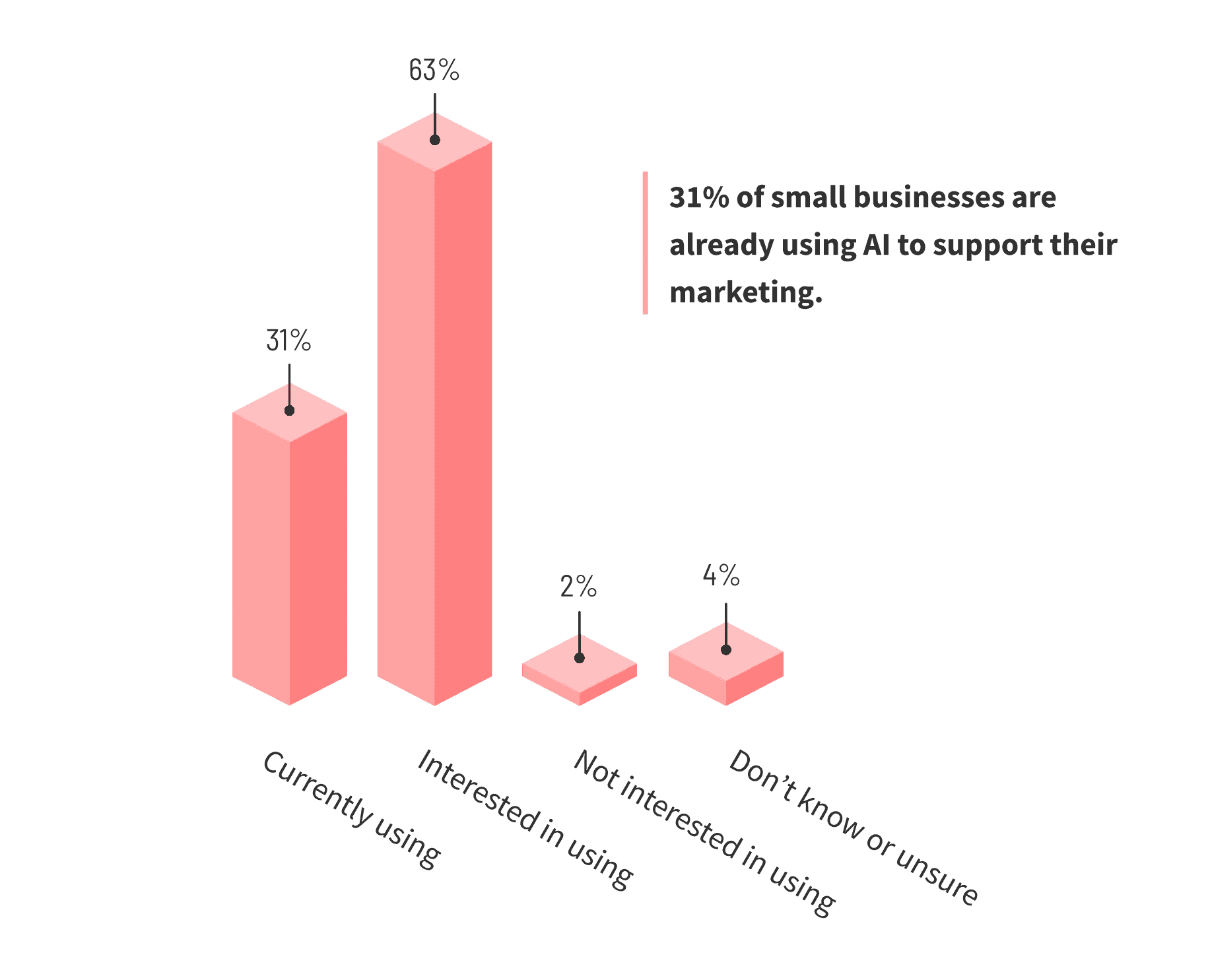
Source: The State of AI Marketing for Small Business from Unbounce
This means that if your agency is part of the AI movement, you’re not only keeping up with some of your competitors, but you’re probably leap-frogging ahead of others.
AI conversion rate optimization tools give agencies an edge by helping them optimize faster and more accurately than competitors still relying on manual methods. With AI CRO, you can launch campaigns that feel hyper-personalized and adaptive, putting your clients ahead in their industries.
For example, an agency using AI-driven CRO landing page tools can deliver highly targeted, data-backed campaigns while competitors are still figuring out what works. Early adopters of AI have a clear competitive advantage in today’s rapidly evolving marketing landscape.
Challenges of Using AI tools for CRO
But before you hand over the reins entirely, it’s worth noting that AI tools for CRO aren’t perfect—there are some limitations you’ll need to navigate to get the best results.
Steep Learning Curve
As with any new technology, integrating AI-powered CRO tools into your workflow requires time and effort. Learning to use these tools effectively—especially for tasks like setting up predictive models or configuring advanced personalization—can take your team out of their comfort zone.
While plenty of resources are available to help teams get up to speed (such as this course from Purdue University, offered on the Simplilearn platform), the investment in training and experimenting with AI tools can feel daunting at first. While it can be challenging for your team to take time out of their busy, task-and-meeting-filled schedules to learn yet another new tool (or three), investing in developing AI expertise will definitely pay off in the long run.
Dependence on Data Quality
Ever heard of “garbage in, garbage out”? AI tools are only as effective as the data they’re trained on. If the input data is incomplete, biased, or low quality, the recommendations AI produces will fall short—and sometimes even steer campaigns in the wrong direction.
For AI CRO specifically, accurate, clean data is critical for building reliable predictive models and delivering meaningful personalization. If your agency isn’t set up to provide high-quality inputs—whether it’s through customer data, behavior analytics, or third-party integrations—the results won’t live up to expectations.
For instance, an AI tool might identify a pattern favoring one audience segment while ignoring others if the data skews heavily toward certain behaviors or devices. This can lead to lopsided optimizations that fail to capture the bigger picture of your audience’s needs.
This is where human oversight becomes critical when using AI CRO tools. AI can crunch numbers and find patterns, but it doesn’t “know” your business like you do. By combining AI-driven insights with strategic human judgment, marketers can ensure optimizations account for the full scope of customer behaviors and avoid leaving segments behind.
Impact on Agency Pricing
Like so many powerful and impactful things in the world, AI ain’t cheap. Depending on what tools you’re using and what you need them to do, the costs can rise pretty quickly.
On the flip side, clients may come to the table with the incorrect assumption that everything your agency does is now much faster and easier using AI tools, asking for a reduction in fees. Be prepared to have discussions around how an AI tool is, in the end, just a tool, and it’s the experience, creativity, and human insights of the agency that is truly worth paying for.
Before you jump feet-first into the AI pool, get a clear idea of the AI services you want to explore and the price for each one. (Here’s a helpful post that breaks down most of the popular AI data tools and their costs.) This can help you determine whether or not you’ll want to pass those increased costs on to your clients.
Why AI Conversion Rate Optimization Needs Human Intervention
AI CRO tools are pretty amazing when it comes to conversion rate optimization. They crunch the numbers, spot patterns, and make lightning-fast predictions. But here’s the catch—they’re not perfect. And that’s where you come in.
AI works off data. It can tell you which headline or call-to-action (CTA) performs best, but it has no clue if that headline actually fits your client’s brand or strikes the right emotional chord with their audience. That’s your job: to take the raw insights AI provides and turn them into decisions that make sense in the real world.
Another thing to watch out for? Gaps and biases in the data. AI loves trends and averages, but sometimes that means it misses smaller (yet important!) audience segments. Maybe the tool optimizes for mobile users because they’re the majority, but desktop visitors end up feeling ignored. This is where your human judgment saves the day. By reviewing AI’s suggestions with a critical eye, you make sure everyone in your audience feels seen and that your strategy stays aligned with your client’s bigger goals.
At the end of the day, AI is a powerful ally, not a replacement for human creativity and strategy. Think of it as your assistant—it handles the heavy lifting so you can focus on the big-picture stuff, like connecting with your audience and making smarter decisions. When you combine AI’s efficiency with your creativity, the result is magic: landing pages that don’t just convert—they leave an impact.
AI = An Asset to Improved Conversion Optimization
AI-powered CRO tools are shaking up how agencies optimize landing pages—and for the better. These tools help you define goals, analyze data, predict user behavior, and personalize content like never before. When used the right way, they’re game-changing for improving conversion rates and hitting your clients’ goals.
But here’s the thing: AI can only take you so far. It’s not a marketing strategy in itself—it’s a tool. The real magic happens when you pair AI’s insights with human creativity, empathy, and strategic thinking. Together, you and your AI “friend” will create landing pages that don’t just attract visitors—they turn them into customers.
So, are you ready to take your CRO to the next level? Trust the data, lean into your instincts, and let AI supercharge your process. Your clients (and their conversion rates) will be thrilled you did!

Written by
Paul Park is a writer on Unbounce's content team who lives and breathes storytelling (it's like oxygen but with better plotlines!). Ask him what he's up to at any given moment, and you'll get answers ranging from folding paper dragons (y'know, origami), catching up on the latest cool tech, and finding other ways to channel his inner geek.
Read more posts by Paul ParkSee how 7,100+ marketing agencies help clients win
Free 14-day trial. No credit card required.


